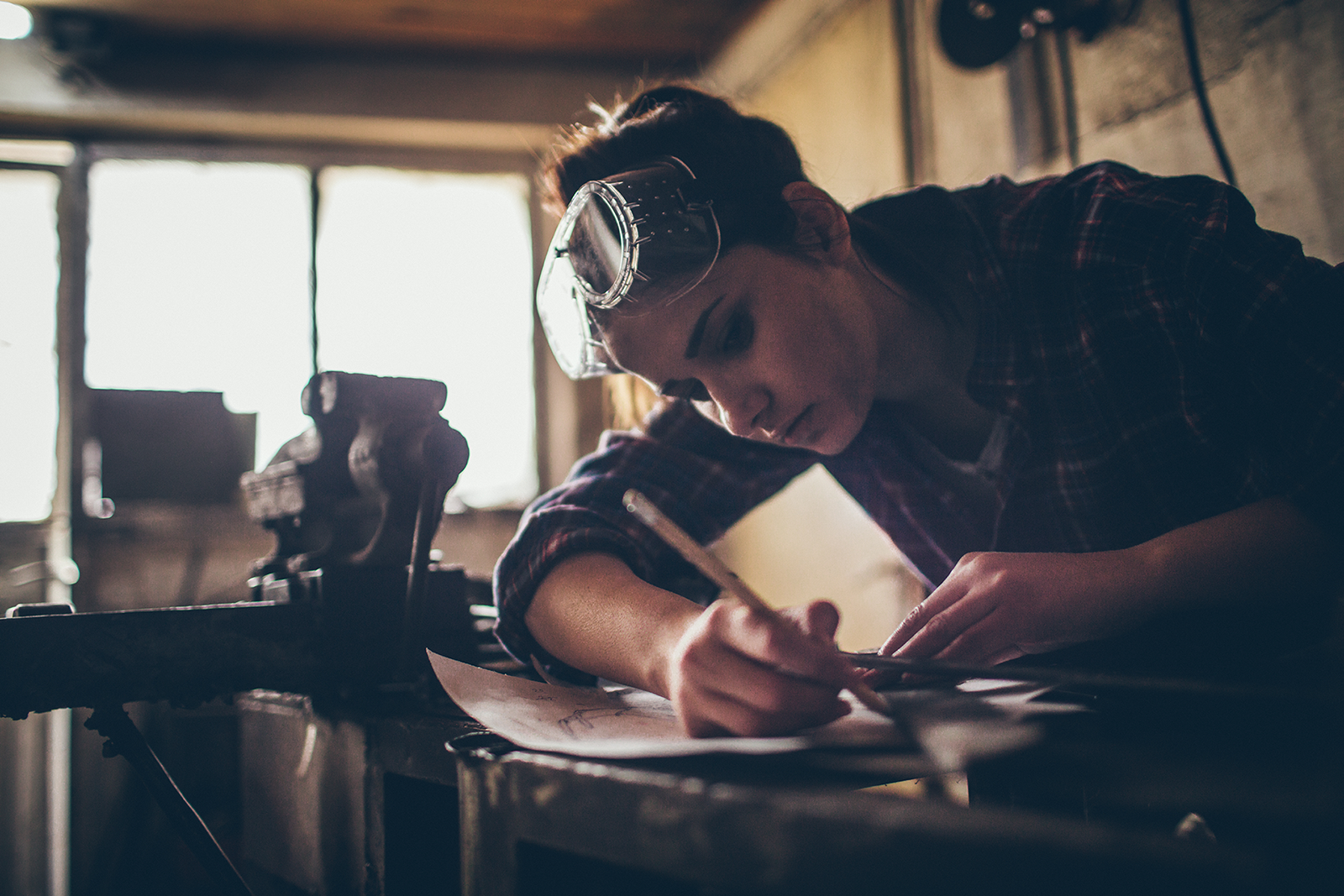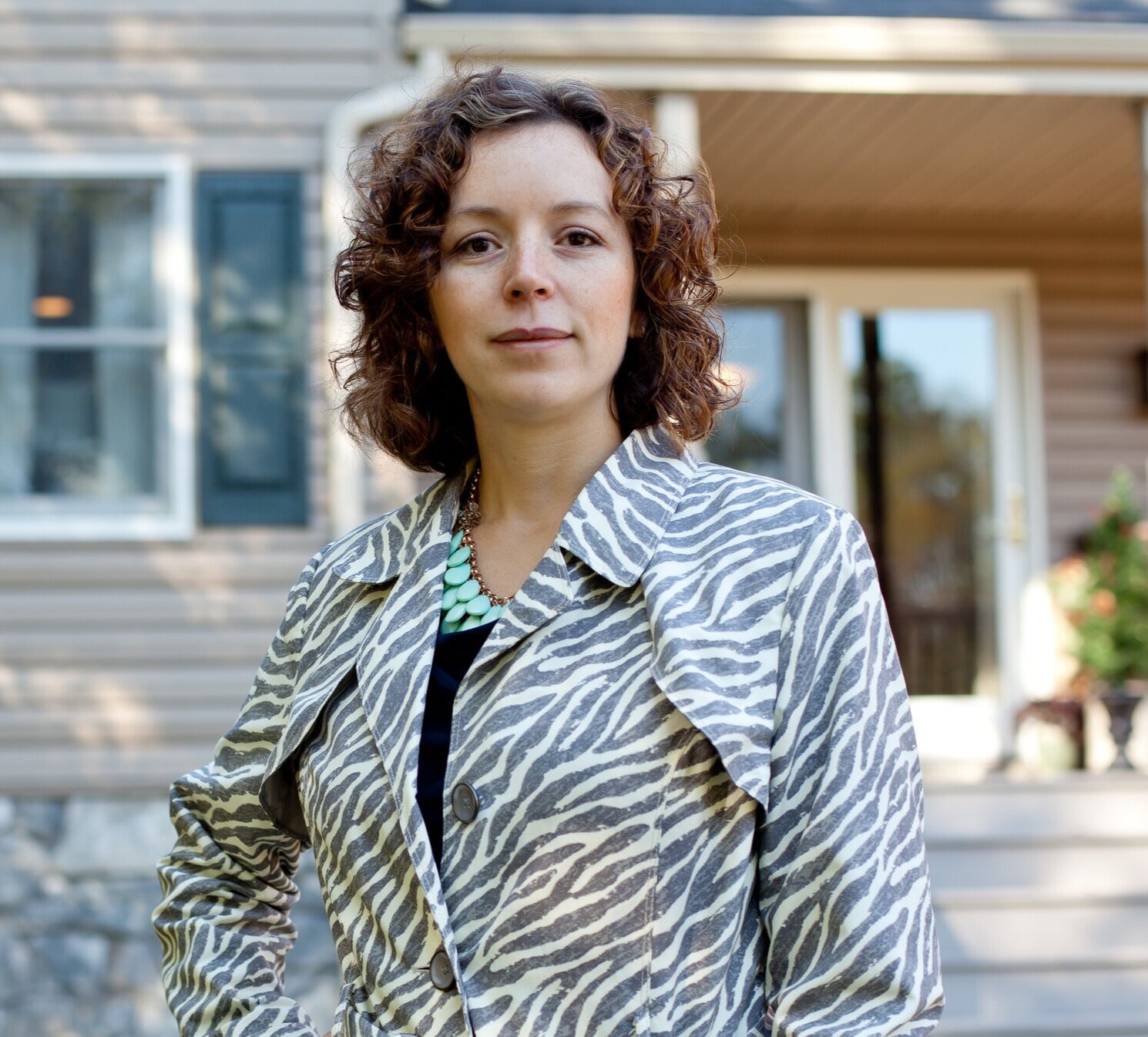Women's Work: Women in high performance building in Maine
Introduction by Emily Mottram
THEY SAY THAT HANDS-ON LEARNING outside the classroom is important for children to continue into the trade fields. Studies in the past have shown that men, more than women, continue their hands-on learning through things they are taught outside of school. With a lack of women in the trades, that seems true. It makes me wonder if my childhood led me to the field of architecture because my dad was a farmer and my grandfather was a contractor. Is that a unique story, or is that true of most of the women in construction and architecture fields? Going into the field of architecture was always something I knew was possible because we had drafting and wood tech in school and I did summer work camps with my grandfather fixing up homes. Have we simply not told women that there are other amazing women in this industry, and that you, too, may be the perfect fit for a job in the trades?
In a 2009 study, statistics showed that 41% of architecture school graduates are women, but only 20% become registered architects. And only 9% of construction workers are female. After speaking with several women in the field, it seems that, “Some of the women who try have had poor experiences and left the industry,” as one female owner observed. In other cases, it seemed like the opportunities in the trade industry were just not presented as options. “Women think because they have no experience, they should work for free to prove themselves,” said one female owner of a construction company. “It’s hard to be confident and not come off as arrogant,” said a female passive house trainer.
In an industry that needs every person willing to join it, the doors are open. It’s 80% personality and 20% skill. You can learn to be a good contractor, an excellent designer, an organized project manager, to swing a hammer and use a chop saw. Those are skills that can be taught. The passive house trainer I spoke with recently said, “I may not be an expert with a hammer, but I’m an excellent communicator and I can help you thoroughly understand the science behind why we build the way we do in passive house.”
The “Move Over Bob” movement – a national initiative that aims to create a community who support and inspire the next diverse generation of women and their allies in the trades – is helping to bring awareness to some of the amazing women who took the chance and joined in the trade fields. It’s a way to share their stories, helping empower and encourage other women to take the leap and join in. So many skills we have as women are valuable in the construction industry, even if you never intend to swing a hammer.
Now is our opportunity to highlight some of the amazing Maine women in construction.
Emily Mottram is an architect and principal of Mottram Architecture. She developed an interest in building science and sustainable design in college, where she was inspired to design healthy, durable, and high-efficient homes that are also comfortable and beautiful. She is a building science educator, co-host on "The BS & Beer Show" (*BS = Building Science) and hosts a weekly podcast, "E3 - Energy and Efficiency with Emily," where she focuses on building science, architecture, and female entrepreneurship.
HEATHER THOMPSON
Juniper Design+Build
“Renovation ends up being a series of problems to figure out and solve and I love collaborating with people to solve a problem and make something better.”
MEREDITH RANDOLPH, CPHC
Four Winds Design
“It is great working with builders who are excited to have detailed discussions about the relationships of energy and moisture in the building envelope or share experiences with new sustainable products.”
HELEN WATTS
Criterium Engineers
“I was good at math and I liked physics and chemistry. I also had art lessons, and I think learning to see, and draw what you see — not what you think you see — is a vital skill for any professional.”
KATHERINE CARLSON
Maine Mountain Timber Frames
“I really enjoy the integrated process of communicating with a client to develop a design, working out the structural details with the engineer, and then ordering the timbers from a local sawmill and seeing them turn into a three-dimensional building.”
SONIA BARRANTES
Ripcord Engineering
“My favorite part of the job is pushing the boundaries of conventional design in service of finding truly elegant solutions. The most challenging part of the job is pushing the boundaries of conventional design.”
CLAIRE BETZE
Owner, BuildingWorks, LLC
“Engineering really helped me understand all aspects of a project and the importance of bringing the entire team together and respecting the skill sets of everyone involved. ”
Editors Note: I’m grateful to the women who have shared their stories here. While women comprise a fraction of professionals in the building trades, Maine has a growing number of women in the green building space. As I read the responses here and consider interviews that we have conducted recently, I see some themes emerge. First, in order to see more women in the trades we need to know these professions are options for us. We hope, by publishing these stories, to take a step forward in that regard. Second, the growth in the prefabricated high performing home sector is opening up new opportunities for people of all skill levels and physical abilities, including women. And third, we need more mentoring and training programs in the building trades in general, and some that specifically target women. Do you know a young woman who may be inspired by these stories? I invite you to pass this article along.
-Heather Chandler
This article appeared in the Fall 2020 edition of Green & Healthy Maine HOMES. Subscribe today!










